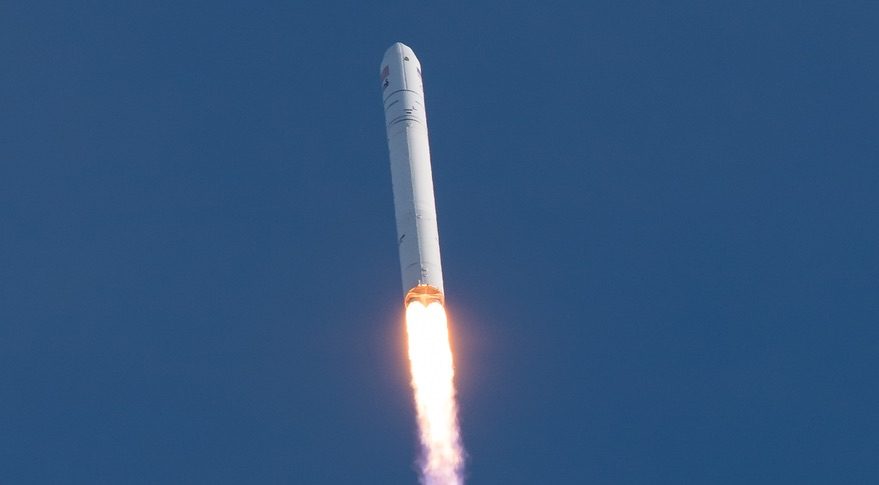The Cygnus NG-13, which is also named Robert Lawrence Jr after the black astronaut who was unfortunately killed in a 1967 air crash before he got to fly into space, was launched by an Antares 230+ rocket from the Mid-Atlantic Regional Spaceport (MARS) located at Wallops Island in Virginia, USA on 15 February. The launch time was 2021 GMT. The Northrop Grumman owned spacecraft, which was on a commercial cargo mission for NASA, made a slow multi-orbit approach to the International Space Station (ISS).
The Cygnus NG-13 freighter is carrying 3,337 kg of cargo including space hardware, science payloads and food and supplies for the ISS crew. The equipment carried included the ColKa Ka-band antenna for ESA, which is built by MDA UK and which will be later fitted to the Columbus module.
Three satellites were also carried on the flight so that they can be transferred to the ISS for a later release. These were the Red Eye 2, a 100 kg technology test satellite for DARPA concentrating on intersatellite links which was contained in its own Nanoracks Kaber deployer. The remaining pair of satellites were on a NRSCD deployer: The DeMi (Deformable Mirror) 6U CubeSat mission to test out this technology for MIT. The TechEdSat 10 mission, which is a 6U CubeSat with an aerobrake from NASA Ames/San Jose State University which will measure re-entry conditions during deorbiting.
Update on 20 February 2019: The Cygnus spacecraft was grappled at 0905 GMT on 18 February 2020, by the ISS robot arm, and later fully berthed at 1116 GMT on same day.
On 19 February, nine cubesat-class satellites attached to NRSCD deployers delivered to the ISS on earlier missions, were taken out of the JEM module by its robot arm and released. These were: RadSat U at 0710 GMT, Phoenix at 0935 GMT, QARMAN at 1120 GMT, Cyrocube-1 and Aztechsat-1 both at 1255 GMT, SOCRATES at 1430 GMT, Argus-02 MVP and HARP at 1600 GMT, and SORTIE at 1740 GMT.
All times from Jonathan McDowell. www.planet4589.org







